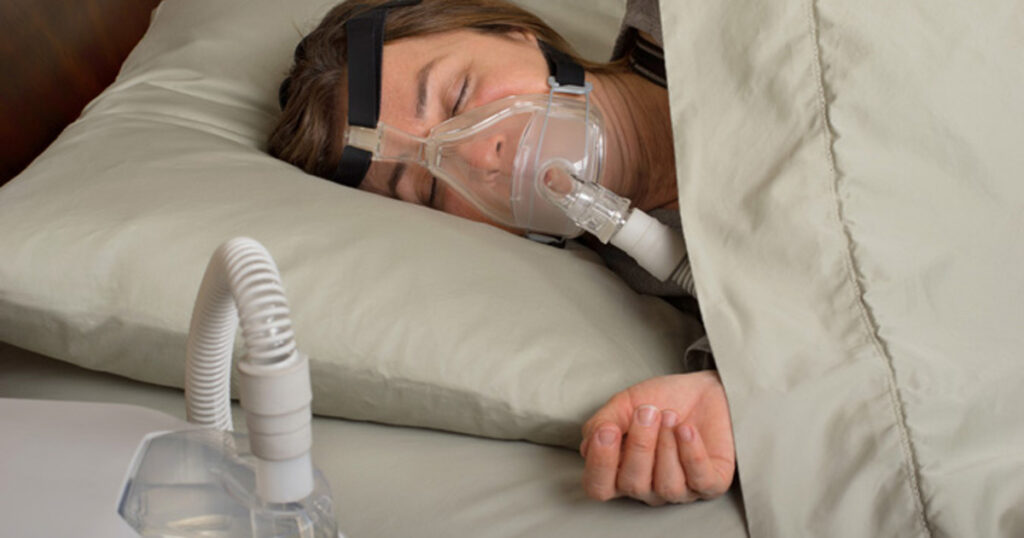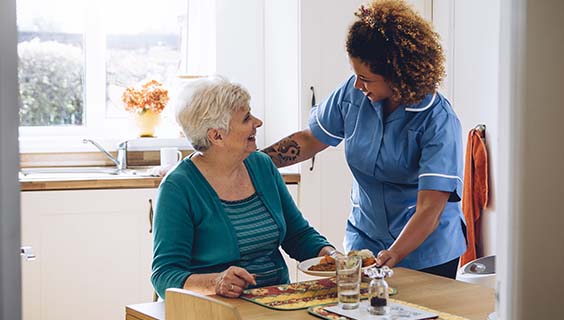Nursing Care at Home. Is it worth it?
In recent years, receiving nursing care at home or hospital-to-home care has grown in popularity. As a result of improvements in medical technology and the growing need for individualized treatment, more and more individuals are choosing this option for themselves or their loved ones. Patients and their families receive not just physical treatment but also […]
When is the right time for in-home care?
The World Health Organisation (WHO) predicts that by 2050, there will be almost 2 billion individuals in the world who are 60 or older, up from 900 million in 2015. As a result, it is anticipated that over the next few years, demand for in-home care services would rise dramatically. By 2060, there will be […]
Dementia: Effect of Cynical Distrust on Cognitive Functions
What is Dementia? Dementia is a general term for loss of memory, language, problem-solving, and other thinking abilities that are severe enough to interfere with daily life. Alzheimer’s is the most common cause of dementia. Dementia often affects adults over 65, although it can also run in families where dementia has previously occurred. What is […]
The link between Parkinson’s disease and older adults
Parkinson’s disease is a neurodegenerative disorder that affects the dopamine-producing neurons in the brain. It is a progressive condition that can cause a range of motor and non-motor symptoms, including tremors, rigidity, slow movement, and difficulty with balance and coordination. Parkinson’s disease is primarily associated with older adults, with most cases diagnosed in people over […]
How to manage chronic obstructive sleep apnea in older adults
Obstructive sleep apnea (OSA) is a common sleep disorder affecting many older adults. According to the National Sleep Foundation, about 50% of adults aged 65 and older suffer from OSA. OSA is a chronic condition that causes pauses in breathing during sleep, leading to poor sleep quality, decreased oxygen levels in the body, and a […]
Addressing the end-of-life care needs of older adults and their families
As people age, it’s important to plan for end-of-life care to ensure their wishes are respected and their families are prepared for the eventual loss. End-of-life care involves a range of medical, emotional, and practical considerations that can be challenging for older adults and their families. End-of-Life Care for Older Adults and Their Families However, […]
The impact of chronic liver disease on older adults
Chronic liver disease is a serious health condition that affects a significant number of older adults worldwide. As the population ages, this disease’s prevalence is increasing, and it is important to understand its impact on older adults’ quality of life and overall health. Impact of Chronic Liver Disease on Older Adults This article will discuss […]
Strategies for managing depression in older adults
Depression is a common mental health issue among older adults, affecting an estimated 6 million Americans aged 65 and older. Depression can significantly negatively impact the quality of life, including physical health, social functioning, and cognitive abilities. Older adults with depression are also at increased risk of developing other health conditions like heart disease and […]
Promoting healthy social connections in older adults
Social connections are important for people of all ages, but they are especially important for older adults. Healthy social connections can help prevent depression and loneliness, improve overall well-being, and even increase lifespan. In this article, we will discuss the importance of promoting healthy social connections in older adults and strategies for doing so. The […]
The impact of stroke on older adults and their families
Stroke is a serious condition that can have a significant impact on the lives of older adults and their families. It is a leading cause of disability and can result in long-term physical, emotional, and cognitive challenges. In this article, we will discuss the impact of stroke on older adults and their families, as well […]
Addressing the nutritional needs of older adults
As we age, our bodies go through a number of changes that can impact our nutritional needs. These changes can be influenced by a variety of factors, including decreased appetite, changes in digestion, and the presence of chronic health conditions. Addressing the nutritional needs of older adults is essential for maintaining good health and preventing […]
How to manage heart failure in older adults
Heart failure is a serious medical condition that affects millions of people around the world. It is particularly common in older adults and can have a significant impact on their quality of life. As we age, our heart muscles can become weaker and less efficient, which can lead to heart failure. However, with proper management, […]
The link between kidney disease and older adults
As people age, the risk of developing kidney disease increases. According to the National Institute of Diabetes and Digestive and Kidney Diseases, about 38 percent of adults aged 65 or older have some degree of kidney disease. The link between kidney disease and older adults is significant, as the condition can lead to serious health […]
Strategies for managing chronic obstructive pulmonary disease
Chronic obstructive pulmonary disease (COPD) is a chronic lung disease that affects millions of people worldwide. It is a leading cause of morbidity and mortality in older adults. COPD is characterized by shortness of breath, coughing, and wheezing. The disease progresses over time, causing damage to the lungs and making breathing more difficult. COPD is […]
March 26, 2023
Addressing the dental health needs of older adults
As we age, our dental health needs change. Older adults are more susceptible to dental problems such as tooth decay, gum disease, and tooth loss. These issues can affect an individual’s ability to eat, speak, and socialize comfortably, leading to a decline in their overall health and well-being. Addressing the dental health needs of older […]
The impact of cancer on older adults and their families
Cancer is a life-changing diagnosis that affects people of all ages, but it is especially challenging for older adults and their families. The elderly population is particularly vulnerable to cancer due to their aging bodies and weakened immune systems. The impact of cancer on older adults and their families can be devastating, and it is […]
How to manage chronic pain in older adults
Chronic pain is a common ailment among older adults. It can have a significant impact on their quality of life, causing physical, emotional, and social distress. Managing chronic pain in older adults can be challenging because of age-related changes in the body, increased medication sensitivity, and the presence of multiple comorbidities. In this article, we […]
March 24, 2023
Promoting healthy sleep in older adults
As we age, our sleep patterns and needs change. While some older adults can sleep soundly through the night, others may struggle to fall or stay asleep. This can have negative effects on their health, including increasing the risk of chronic conditions like heart disease, depression, and dementia. In this article, we will explore the […]
Addressing the hearing and vision loss needs of older adults
As we age, our bodies undergo various changes, including a decline in our sensory organs’ functionality. One of the most common changes that older adults experience is hearing and vision loss. According to the World Health Organization (WHO), approximately 466 million people worldwide live with disabling hearing loss, with older adults being the most affected. […]
The link between osteoporosis and bone health in older adults
As we age, our bodies undergo various changes, including bone loss. Osteoporosis is a condition that affects bone health, making bones fragile and more prone to fractures. This condition is prevalent among older adults, and it has been linked to various factors, including genetics, lifestyle, and hormonal changes. In this article, we will discuss the […]
How to prevent falls and related injuries in older adults
Falls and related injuries are major health concerns for older adults. According to the Centers for Disease Control and Prevention (CDC), one in four older adults falls each year, and falls are the leading cause of both fatal and nonfatal injuries among older adults. The good news is that many falls and related injuries can […]
Addressing the mental health needs of older adults
As individuals age, they may experience various mental health issues that can impact their overall well-being. Depression, anxiety, and dementia are common mental health concerns among older adults. It is important to address these concerns to ensure that older adults receive the care and support they need. In this article, we will explore ways to […]
Strategies for managing Alzheimer’s disease in older adults
Alzheimer’s disease is a progressive brain disorder that affects memory, thinking, and behavior. It is the most common cause of dementia among older adults, and as the population ages, the number of people affected by this condition is expected to rise. Alzheimer’s disease can be challenging to manage, but there are strategies that can help […]
The impact of dementia on older adults and their families
Dementia is a general term used to describe a group of symptoms that affect memory, thinking, and social abilities. As the population ages, dementia is becoming increasingly common, and it can have a profound impact on both older adults and their families. In this article, we will explore the impact of dementia on older adults […]
How to prevent and manage diabetes in older adults
As people age, they become more susceptible to developing diabetes. This is due to a combination of factors such as reduced physical activity, changes in metabolism, and increased insulin resistance. Diabetes is a serious health condition that can lead to a range of complications, including heart disease, stroke, kidney disease, and nerve damage. However, there […]
The link between hypertension and cardiovascular disease in older adults
As we age, our body undergoes many changes, and one of the most common changes is hypertension or high blood pressure. Hypertension is a major risk factor for cardiovascular disease, which is the leading cause of death in older adults. In this article, we will explore the link between hypertension and cardiovascular disease in older […]
How to prevent and manage arthritis in older adults
Arthritis is a common condition that affects people of all ages, but it is more prevalent among older adults. As we age, our joints experience wear and tear, which can lead to arthritis. Arthritis can cause pain, stiffness, and limited mobility, which can affect an individual’s quality of life. However, there are steps that older […]
The top 10 chronic diseases that affect older adults
As we age, our bodies become more vulnerable to chronic diseases that can significantly impact our quality of life. Chronic diseases are long-lasting conditions that require ongoing management, and they become increasingly common as we get older. Here are the top 10 chronic diseases that affect older adults: Arthritis: Arthritis is a chronic disease inflammation […]
January 24, 2023
Health Care Professionals:7 Biggest Mistakes that Stop You from Making the Money You Desire
The COVID-19 pandemic has highlighted the importance of healthcare professionals in our daily lives. As our warriors of hope, all health care professionals have protected our society against various contagious diseases. Despite working long hours, registered nurses, CNAs, and LPNs make critical mistakes that keep them from earning the money they desire. Are you a […]
partnership4health.com – Your one stop place to find Nurses
Coming soon is partnership4health.com. This is your one-stop place for you to hire nurses.
9 Ways Nurses Can Save for the Future
Did you know that a majority of nurses fear that they haven’t saved up enough for retirement? Fortunately, there are a few steps you can take right now to make sure you are preparing for your future effectively: Start a Roth IRA Open up a high-interest savings account Start a freelance side business with a […]
7 REASON NURSES ARE FEELING UNDERPAID
7 Reasons Nurses Are Feeling Underpaid Across the country, frontline healthcare workers and nurses are feeling undervalued and underpaid. Here are just a few reasons: Staffing shortages have led to unsafe working conditions. Nurses risk getting injured on the job. The stress and physical demands of the nursing profession are causing many seasoned professionals to […]
How to make more money as a Nurse in the United States? | Partnership for Health
It is a sad reality that the U.S. population has been growing older for many years now. Nurses are in high demand and their numbers will continue to increase as people age. This means there is going to be a greater need for them, which can only mean one thing: more nurses are needed! As […]
Do you have a plan for caring for your elderly loved one?
The number of Americans over the age of 65 is expected to more than double, from 46 million today to more than 98 million by 2060, accounting for nearly 24 percent of the population. Can you believe those numbers? In all fields of healthcare, we will inevitably see an increase in the number and percentage […]
Do you have a loved one that will need home care in the next 3 to 5 years?
If so, here’s what you need to know: Home care can be a great way to provide support for your loved one. You might not think that they need it, but the truth is that there are many benefits and things you’ll want them to have when living at home on their terms with a […]
What obstacles might you encounter when looking for a caregiver to provide home care for a family member or loved one?
There are many obstacles you might encounter when looking for a caregiver to provide home care. The most important thing is to be prepared for them and to have a plan B in case things don’t work out. Here are some of the most common obstacles and how to overcome them: 1. Lack of caregiver […]
It takes a Village
As the population of elderly individuals continues to grow, more and more people acquire home care services. For some, receiving help at home is the only way to get the care they need and stay out of a nursing home. Thankfully, many agencies provide home care services. While these agencies often have their procedures and […]
Over 50-Curious about what Foods to Stay Away from
If you’re over 50, you may be curious about which foods to avoid. You want to make sure that you’re fueling your body with the right nutrients so that you can stay healthy and active. But while it’s important to focus on the foods that you eat, it’s also important to be aware of the […]
5 Tips for Managing your Aging Parents’ Finances
As your parents age, one of the most important things you can do for them is to help them manage their finances. Your parents might need extra help with managing their finances and ensuring they’re set up for retirement or just in general. Here are five tips to help you get started: 1. Discuss your […]
5 Tips to Lower Your Stress
Are you feeling stressed out? If so, you’re not alone. Stress is a common problem that many people face. While there’s no single solution that will work for everyone, there are some things you can do to lower your stress levels. Here are five tips that can help: 1. Exercise regularly. Exercising releases endorphins, which […]






































Recent Comments